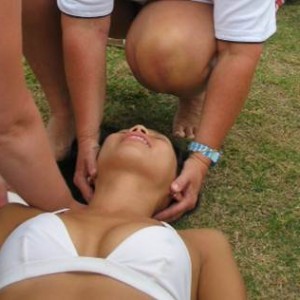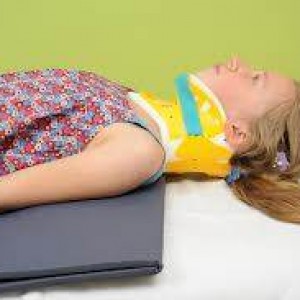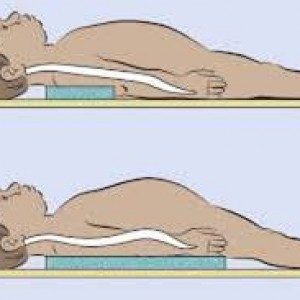Neutral Position for neck
The neutral position for the neck represents the normal alignment of the bones, and in most cases it is preferable to return the neck to this position prior to immobilisation and transport or transfer into an ambulance.
The head is neither flexed nor extended, is not rotated left or right and is not laterally flexed (with the ear towards the shoulder) on either side.
In an unconscious injured person, it is best to reposition thehead to this neutral position, but not to force it into position if there is some mechanical block to further movement.
In the conscious, injured person, the first responder should cease repositioning the neck if there is an increase in any of their symptoms, including pain, weakness, tingling or a “pins and needles” sensation or if there is any physical block to further movement. Most certainly if the injured person complains that any manoeuvre is making things worse, manipulation of their neck should immediately cease and an attempt made to maintain the neck in the position in which it is most comfortable.
This may mean manual inline support as described previously, or the use of cervical collar that allows the neck to be held even if it is not in the neutral position.
- Midline
- “sniffing the breeze” position
- Not:
- flexed
- rotated
- laterally flexed
- DO NOT FORCE!!
- DO NOT REPOSITION NECK IF:
- Pain increases
- Weakness increases
- “Tingling” increases
- Mechanical “block” to further movement
- injured person complains
Sometimes it may be necessary to introduce padding behind the neck itself or the immobilisation equipment being used in order to maintain a neutral position of the neck.
Similarly, padding may be required under or between the shoulders so as to emulate the normal curvatures of the spine in the uninjured state.
- A more neutral alignment of the cervical spine may be obtained by placing padding under the appropriate sections of the spine.
- However this technique may require the injured person to be moved onto their side (log-rolled) for the padding to be inserted.






